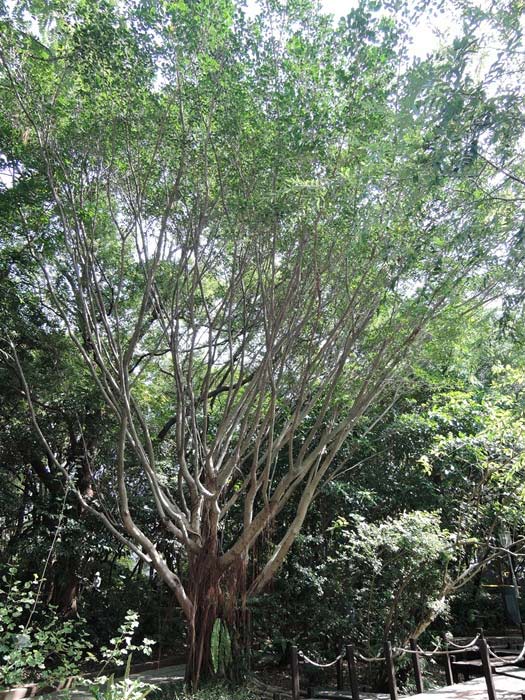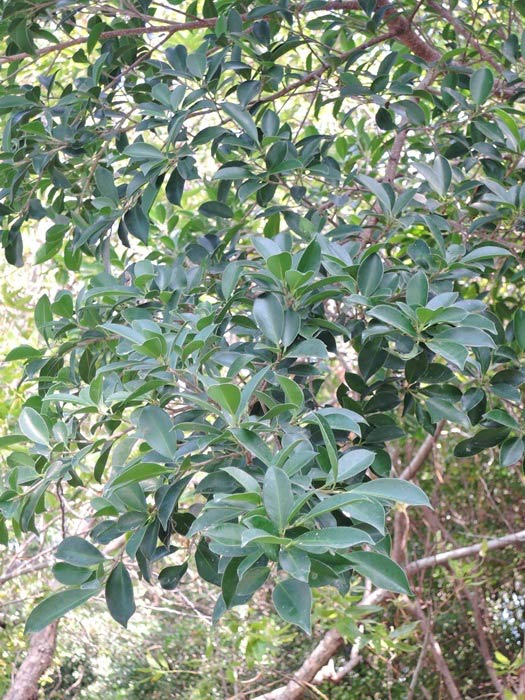Ficus microcarpa
The banyan tree is definitely one of the most commonly seen plants in the daily lives for Taiwanese. In the rural areas of Taiwan, small temples dedicated to the Earth God are often found next to rice fields, and the large trees beside these temples are mostly banyan trees. Under their expansive shade, it is common to see locals resting and chatting. In the cities, banyan trees are also a common sight in parks and along sidewalks, providing dense shade that helps urban residents escape the scorching sun and brings them a refreshing coolness. In the vicinity of the museum, there are three large banyan trees that have been designated as protected trees by the Agriculture Bureau of Taichung City Government, located next to two nearby Earth God temples.
In many folk customs in Taiwan, the presence of banyan trees can be observed. For example, in rural areas, there is a tradition of "banyan tree planting festival," which was believed in the past to help block floods by planting banyan trees at the source and downstream of water flow. During funerals, people often carry a few banyan leaves with them and throw the leaves into a roadside ditch when leaving the venue to avoid bringing bad things home. During the Dragon Boat Festival, there is a custom of tying together the branches and leaves of three plants—mugwort, calamus, and banyan—and hanging them on the door to ward off evil spirits.
The banyan tree is known for its strong vitality. In Taiwanese folklore, it is believed that if you cut off branches and plant the end that was originally facing up into the ground, the shade it produces will be wider. Conversely, if you plant the end that was originally facing down, it will result in a taller tree. If you desire a tree with both high and wide shade, you could plant a mix of branches, some facing up and some facing down, at the same time. The 300-year-old banyan tree at Xingnong Temple in the West District of Taichung was created by planting three branches facing up and four branches facing down simultaneously, resulting in its current shape. In the early days of Taiwanese immigration, sometimes people gave red envelopes to single men to plant these branches, as it was believed that planting branches upside down could shorten the planter's lifespan, so it is generally advised that people should not attempt this lightly.

